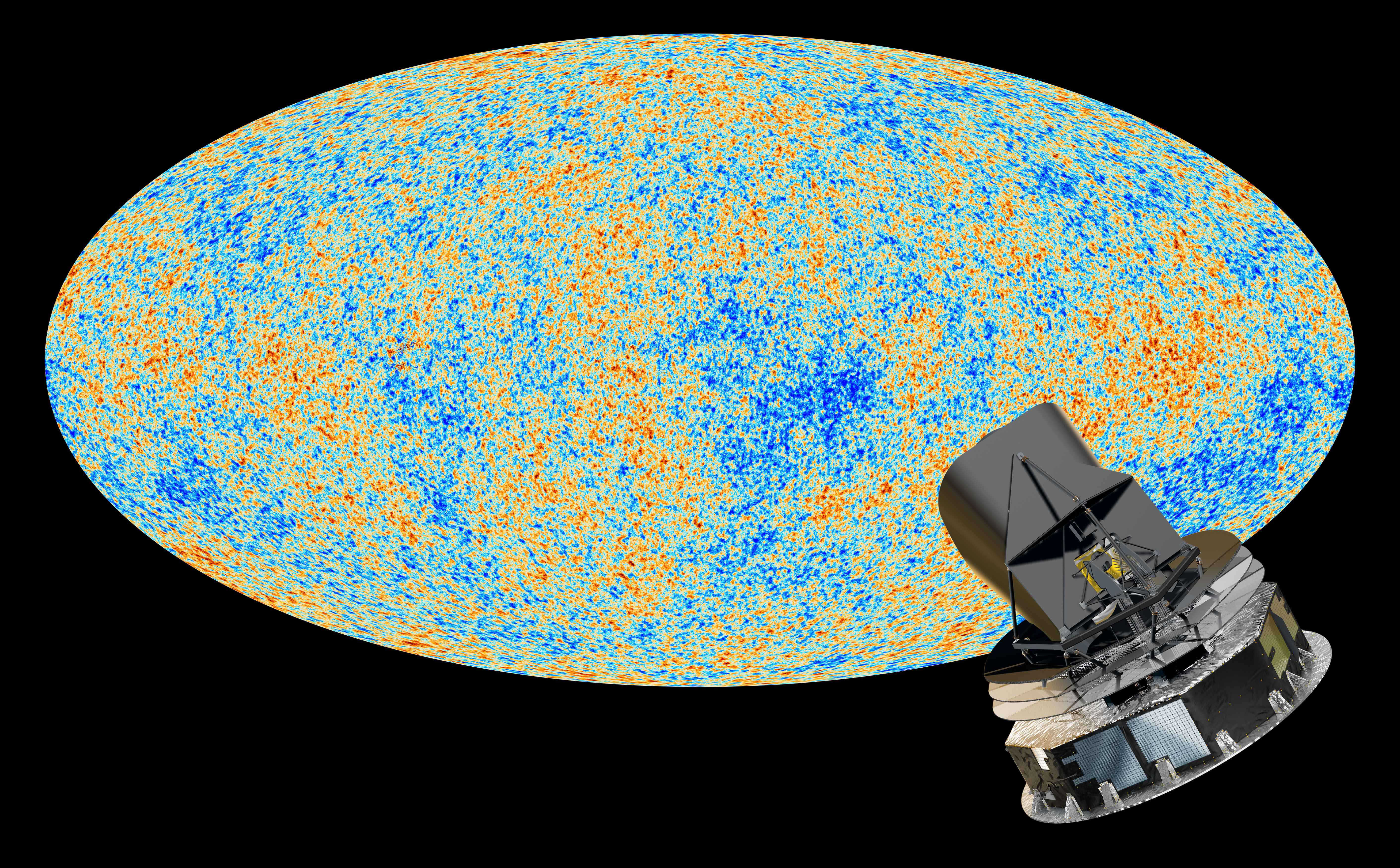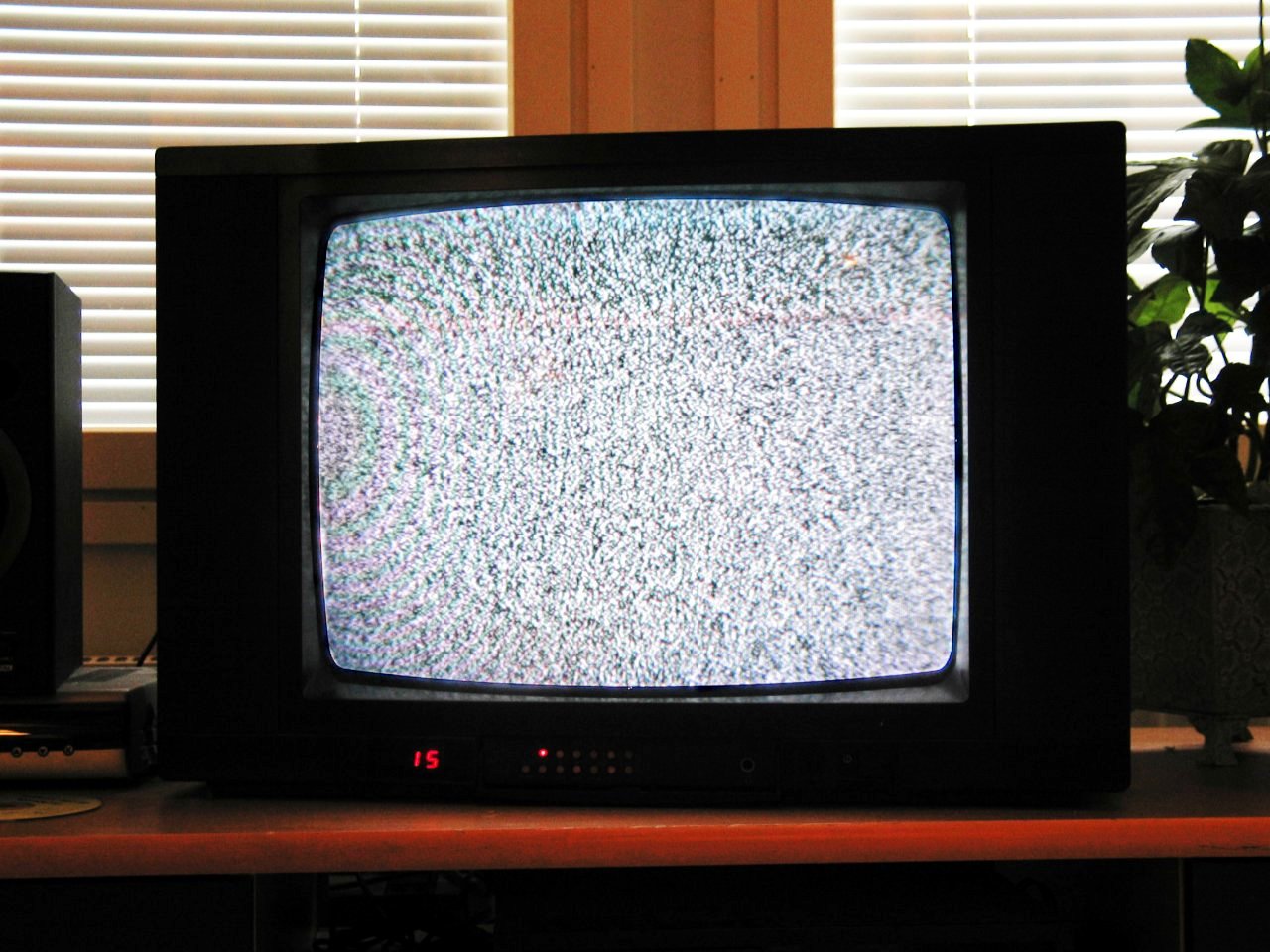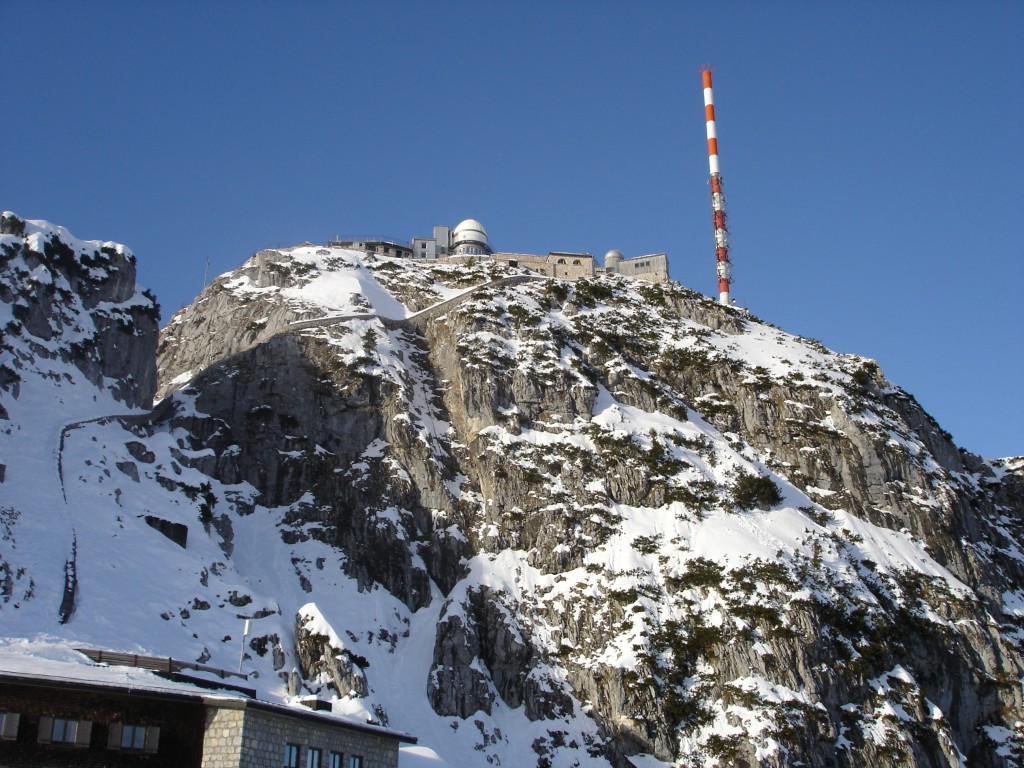
For a public outreach talk I wanted to start with the importance of the Cosmic Microwave Background (CMB) for our understanding of the evolution of the universe. Then I remembered this anecdote that you can “see” the CMB radiation in the noise of your analog TV (if you still have one) and started wondering if that is actually true…

On the web there are several sources claiming that 1% of the noise between the channels of your TV programme are CMB, but I couldn’t find any actual calculation. So I tried my own.
Since I’m not an antenna expert and couldn’t immediately find some meaningful numbers for the radiation for analog terrestrial TV, I used this to come up with an order of magnitude number:
The old analog sender on top of mount Wendelstein in Upper Bavaria radiated at 0.4 kW in channel 48 according to the Wikipedia page. Channel 48 is at about 680 MHz and has a bandwidth of about 8 Mhz. This sender was apparently only used to broadcast to Bayrischzell which is about 2 km away. The sender had a round radiation pattern, i.e. it radiated in all directions, but only in one plane. However, since the town of Bayrischzell has a finite length, the half-power beam-width cannot have been too small. I assume here an H/R of ~ 0.2, i.e. at 2 km distance the half-power beam-width should be ~ 400m (i.e. illuminating an area of 5e6 m^2 at that distance). This is of course only a crude estimate, but for an order of magnitude calculation it should be OK. The specific flux received in Bayrischzell from this sender is thus
0.4 kW / (5e6 m^2 * 8e6 Hz) = 1e-11 W(m^2 Hz) or about 1e15 Jansky (in radio astronomers’ units)

OK, now let’s look at the specific flux of the CMB. This is easy, we just need to substitute proper values (2.7 K, 680 MHz) in the Planck equation and arrive at a specific flux of about 5.4e5 Jansky at the frequency used for the local TV station.
Now we need to compare this not to the signal strength estimated above, but to the estimated noise level of a typical analog TV receiver system. This is a bit tricky, but typical carrier-to-noise ratios (CNR) should be of some help. The carrier-to-noise ratio is the signal-to-noise ratio of a modulated signal. I didn’t find any recommended CNR values for terrestrial analog TV, but other CNR values for TV might give some guidance. In an article published with the Society of Cable Telecommunications Engineers, this guidance is given:
The FCC’s minimum CNR is 43 dB, which, in my opinion, is nowhere near good enough in today’s competitive environment. Indeed, most cable operators have company specs for end-of- line CNR somewhere in the mid to high 40s, typically 46 to 49 dB.
The National Association of Broadcasters Engineering Handbook (p. 1755) has a similar statement:
Noise will become apparent in pictures as the carrier-to-noise ratio (CNR) approaches 43-44 dB […]; a good design target is 48-50 dB.
So let’s assume the sender on mount Wendelstein is calibrated such that is achieves a CNR of 50 dB for the terrestrial analog broadcasting of the local TV station in nearby Bayrischzell. This means the signal is a factor 100,000 (1e5) stronger than the noise.
In this case, the noise level in the TV is about 1e10 Jy or about 200.000 times larger than the CMB signal. So, if this calculation is correct, it seems unlikely that you would be able to see the CMB signal while searching for signal with your analog terrestrial TV.